The National Cancer Center has just released the 2024 National Cancer Report
Recently, with the approval of the National Health Commission, the National Cancer Center released the 2022 burden of malignant tumors in China on JNCC based on the latest data from tumor registration and follow-up monitoring. The results of this release were jointly calculated by the National Cancer Center and the International Agency for Research on Cancer (IARC), and are consistent and synchronized with the GLOBOCAN 2022 data released by IARC in China. The quality and standardization of cancer registration data in China have been further improved, gaining unanimous recognition both domestically and internationally. The updated malignant tumor burden data can provide more objective basic data for cancer prevention and control and the implementation of national health strategies.
2024-11-05 10:03
Recently, with the approval of the National Health Commission, the National Cancer Center released the 2022 burden of malignant tumors in China on JNCC based on the latest data from tumor registration and follow-up monitoring. The results of this release were jointly calculated by the National Cancer Center and the International Agency for Research on Cancer (IARC), and are consistent and synchronized with the GLOBOCAN 2022 data released by IARC in China. The quality and standardization of cancer registration data in China have been further improved, gaining unanimous recognition both domestically and internationally. The updated malignant tumor burden data can provide more objective basic data for cancer prevention and control and the implementation of national health strategies.
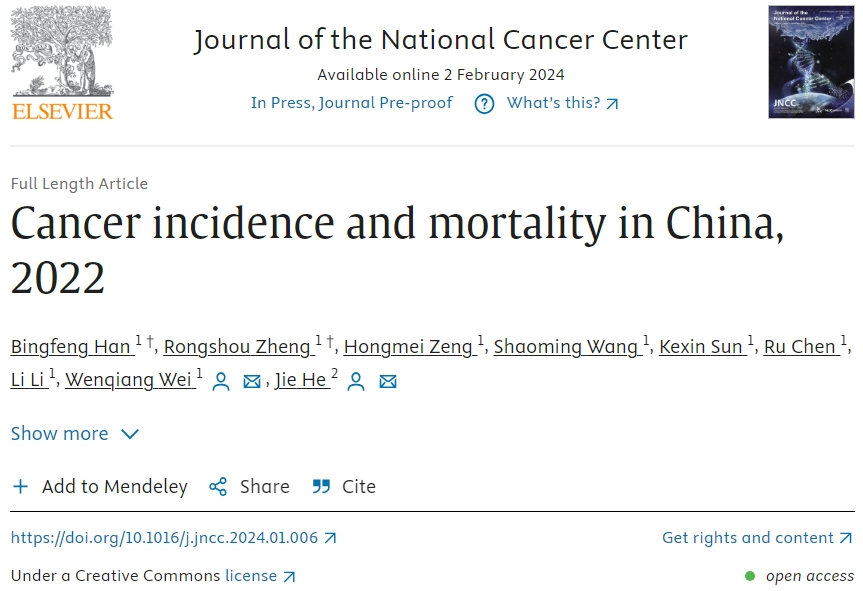
Cancer incidence in China in 2022
Basic information
Table 1 Estimated incidence of malignant tumors in China in 2022

*Female breast cancer# Using Segi World Standard Population for Age Standardization
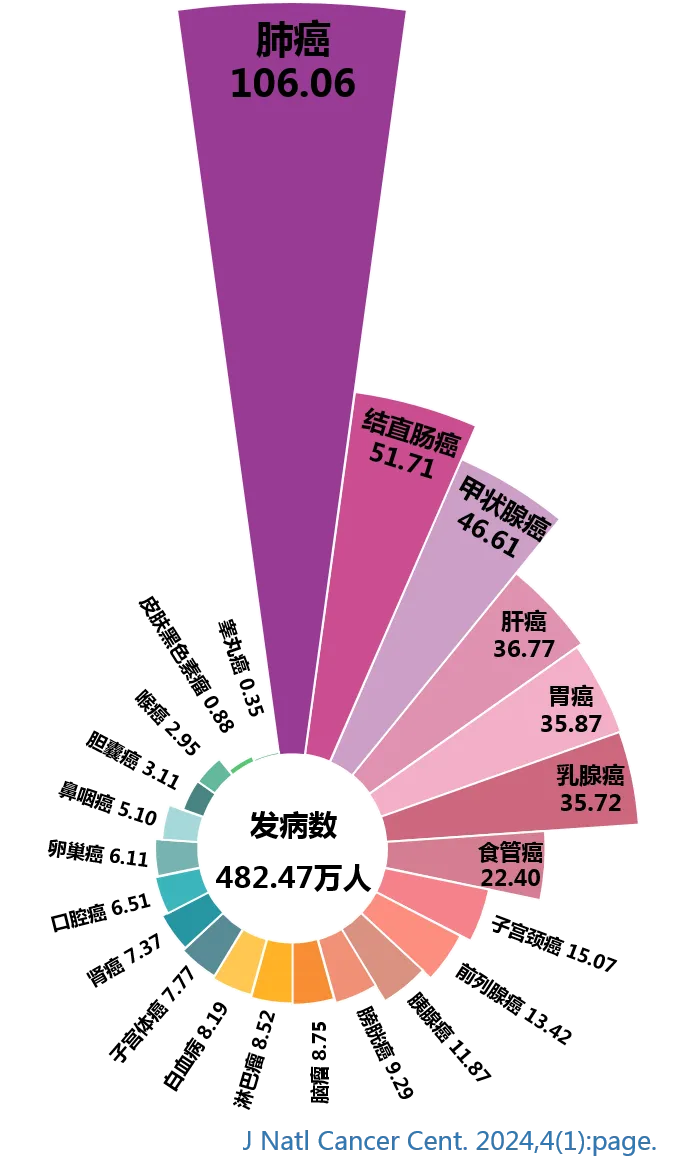
Figure 1: The total number of cancer cases in China (in 10000 people)
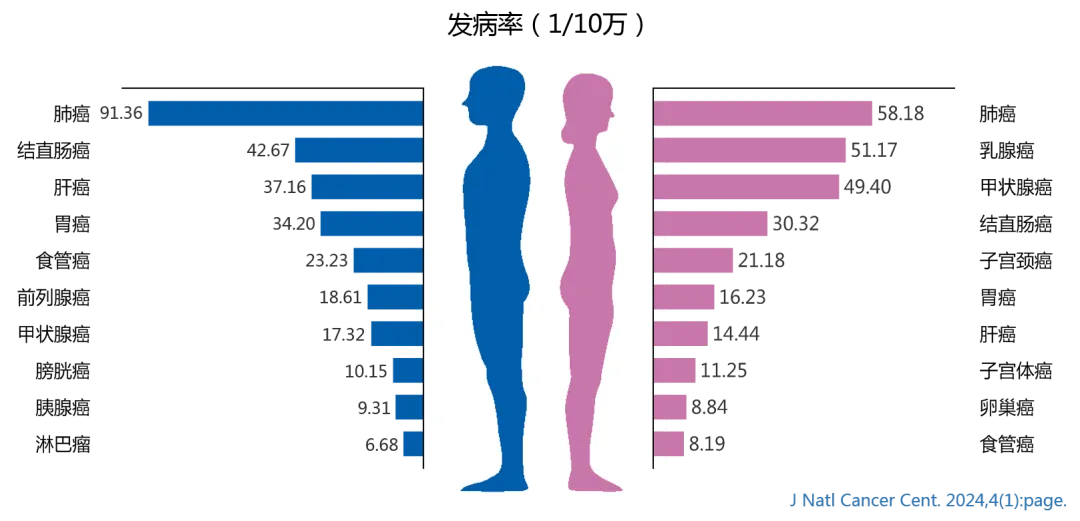
Figure 2 incidence rate and sequence of the top ten malignant tumors in Chinese men and women
Age distribution of incidence rate of malignant tumors
-
The incidence rate of all kinds of cancer is relatively low in the 0-34 age group. It increases significantly from the 35-39 age group, and reaches the peak in the 80-84 age group. -
The incidence rate rate of men between 25 and 54 years old is lower than that of women, while that of men over 60 years old is higher than that of women.
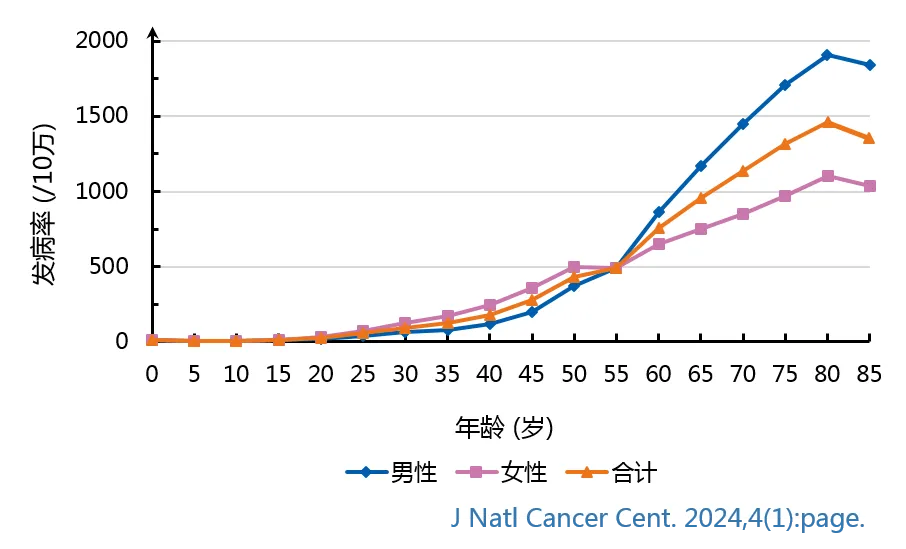
Figure 3 Age distribution of incidence rate of malignant tumors in China
Cancer mortality in China in 2022
Basic information
Table 2: Estimated Deaths from Malignant Tumors in China in 2022

*Female breast cancer# Using Segi World Standard Population for Age Standardization
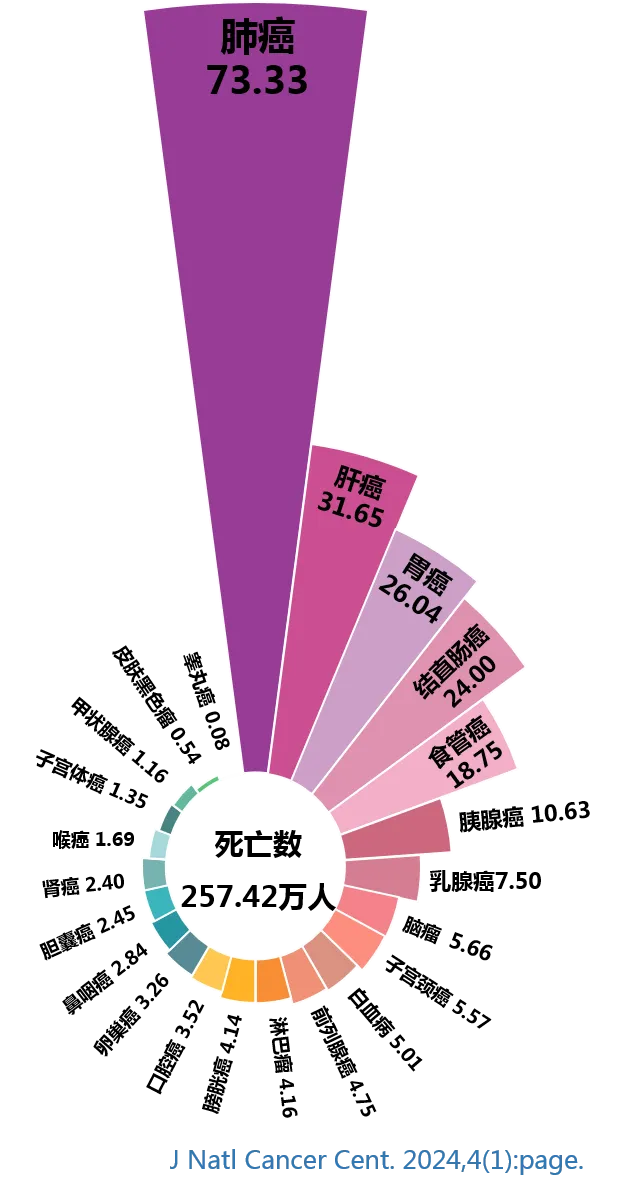
Figure 4: Death toll of all types of cancer in China (10000 people)
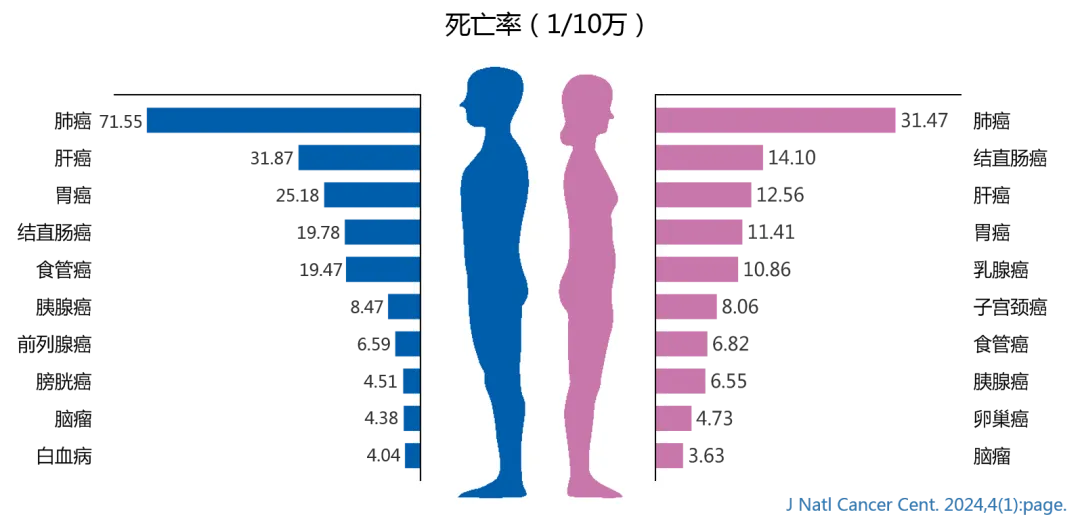
Figure 5: Mortality rates and rankings of the top ten male and female malignant tumors in China
Age distribution of mortality rate in malignant tumors
-
The mortality rate of all cancer types significantly increases after the age group of 40-44 years old, and reaches its peak in the age group of 85 years old and above. -
Among the population aged 40 and above, the mortality rate of males is higher than that of females.
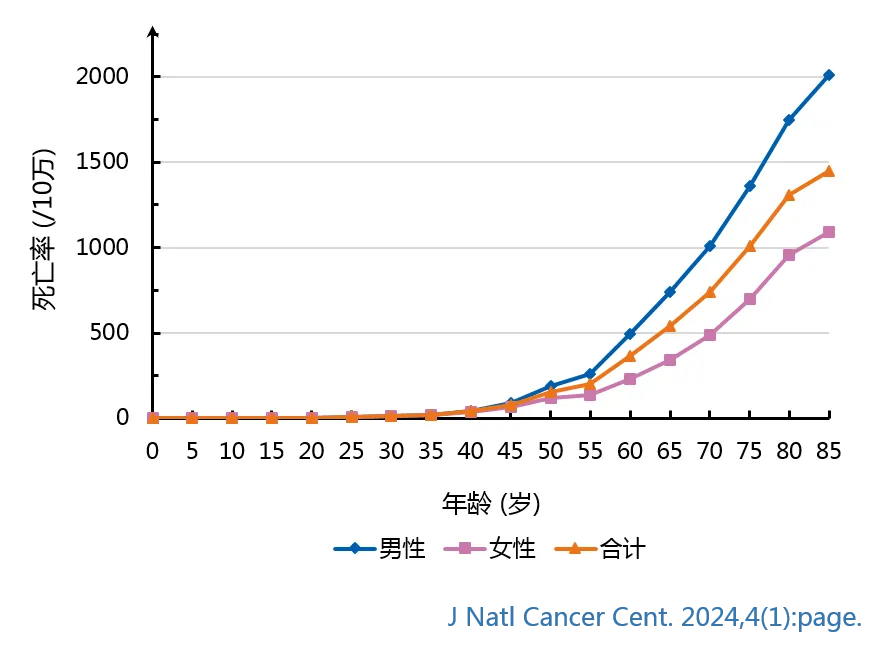
Figure 6 Age distribution of malignant tumor mortality rate in China
Trends in incidence rate and mortality of malignant tumors in China from 2000 to 2018
Disease incidence trend
Death Trend
The standardized mortality rate of all cancer types decreases by an average of 1.3% annually
Rise:
Male: prostate cancer, colorectal cancer, pancreatic cancer
Female: Cervical cancer, ovarian cancer
Decline:
Male and female: esophageal cancer, gastric cancer, liver cancer
Summary
-
Tumors remain a major public health issue in China, and the cancer spectrum structure in China still presents a coexistence of cancer spectra in developed countries and developing countries.
-
The estimated number of new cases and deaths of malignant tumors in China in 2022 has increased compared to previous years. The growth in the number of cases is attributed to both an aging population and the increasing public awareness of cancer prevention and more convenient medical conditions. More and more residents are actively participating in cancer physical examinations and national screening and early diagnosis and treatment programs, resulting in more cancer cases being detected in a timely manner. The increase in the number of deaths is more due to population aging.
-
Lung cancer is the leading cause of cancer incidence and death in China. The top five malignant tumors in terms of incidence are lung cancer, colorectal cancer, thyroid cancer, liver cancer, and stomach cancer, while the top five malignant tumors in terms of mortality are lung cancer, liver cancer, stomach cancer, colorectal cancer, and esophageal cancer.
-
During the period from 2000 to 2018, the standardized mortality rate of all cancers decreased by 1.3% on average every year, especially the age standardized incidence rate and mortality rate of esophageal cancer, gastric cancer and liver cancer, which reflected the initial effect of China's long-term adherence to the above comprehensive cancer prevention and treatment, especially the gradual promotion of upper gastrointestinal cancer screening since 2005.
-
In the future, we should continue to implement the specific requirements of the Healthy China Action Plan and the Cancer Prevention and Control Action Plan, steadily advance in key areas such as comprehensive prevention and control of risk factors, tumor screening, early diagnosis and treatment, and standardized diagnosis and treatment, and strive to initially curb the upward trend of tumor burden by 2030.
At present, the incidence and mortality of malignant tumors in China continue to rise, with medical expenses caused by malignant tumors exceeding 220 billion yuan annually. The results of urban-rural analysis show that the incidence rate in urban areas is slightly higher than that in rural areas, while the mortality rate in rural areas is slightly higher than that in urban areas. However, the difference between the incidence and death of malignant tumors in urban and rural areas is gradually decreasing, which may be due to the narrowing of the urban-rural difference in the risk factors of malignant tumors, such as smoking, chronic infection, eating habits, and air pollution, resulting in a closer incidence rate. The relative scarcity of rural medical resources and weak awareness of cancer prevention have led to a high mortality rate of malignant tumors in rural areas. In the past 10 years or more, the survival rate of malignant tumors has gradually increased. At present, the five-year relative survival rate of malignant tumors in China is about 40.5%. Compared with 10 years ago, the overall survival rate of malignant tumors in China has increased by about 10 percentage points, but there is still a big gap between China and developed countries. The main reason is that the cancer spectrum in China is different from that in developed countries. Digestive system tumors with poor prognosis, such as hepatoma, gastric cancer and esophageal cancer, have a high incidence, while those with good prognosis, such as thyroid cancer, breast cancer cancer and prostate cancer, have a high incidence in developed countries in Europe and America. However, it must be noted that the 5-year survival rate of tumors with good prognosis in China, such as breast cancer (82.0%), thyroid cancer (84.3%) and prostate cancer (66.4%), still lags behind that of developed countries such as the United States (90.9%, 98% and 99.5%). The main reasons for this gap are the low number of early clinical cases, low early diagnosis rate, and non-standard clinical diagnosis and treatment of late stage cases. Therefore, China should work together to expand the coverage of screening, early diagnosis, and early treatment of related tumors, and promote the standardization and homogenization of clinical diagnosis and treatment of tumors, in order to reduce the mortality rate of malignant tumors in China.
In short, the burden of malignant tumors in China is increasing day by day, with significant urban-rural differences, uneven regional distribution, and a severe situation in cancer prevention and control; The cancer spectrum coexists in developed and developing countries, making prevention and treatment extremely difficult.
△The above charts are all organized based on the data from the original article. Please indicate the original article when citing, and refer to the format at the top. For more information, please refer to the original text:
https://www.sciencedirect.com/science/article/pii/S2667005424000061
According to the latest global cancer burden data for 2020 released by the International Agency for Research on Cancer (IARC) of the World Health Organization, China has become a true "cancer powerhouse".
In 2020, there were 4.57 million new cancer cases in China, including 2.48 million males and 2.09 million females. There were 3 million cancer deaths in China in 2020, including 1.82 million males and 1.18 million females.
This is significantly higher than the previously released data. Let's take a look at the specific data analysis of China together:

Double Top: China Leads the World in New Cases and Deaths
In 2020, there were 19.29 million new cancer cases worldwide, of which 4.57 million were in China, accounting for 23.7% of the global total. As China is the world's most populous country, the number of new cancer cases far exceeds that of other countries in the world.
The top ten countries with the highest number of new cancer cases are China with 4.57 million, the United States with 2.28 million, India with 1.32 million, Japan with 1.03 million, Germany with 630000, Brazil with 590000, Russia with 590000, France with 470000, the United Kingdom with 460000, and Italy with 420000.
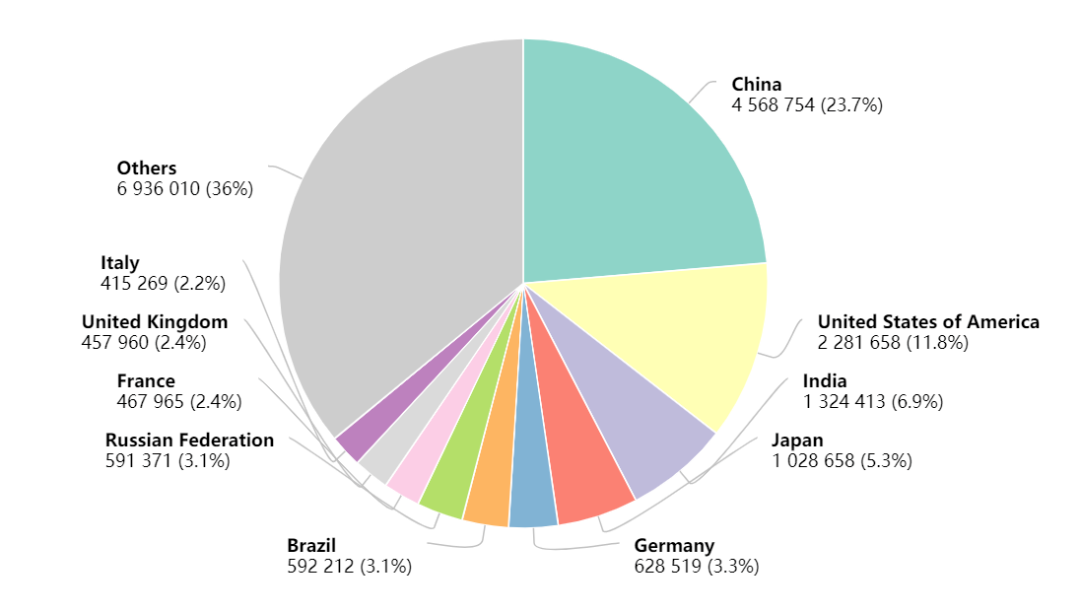
Number of new cancer cases in various countries in 2020
In 2020, there were 9.96 million global cancer deaths, of which 3 million were in China, accounting for 30% of the total cancer deaths. This is mainly due to the large number of cancer patients in China, which ranks first in the world in terms of cancer deaths.
The top ten countries with the highest number of cancer deaths in 2020 are China with 3 million, India with 850000, the United States with 610000, Japan with 420000, Russia with 310000, Brazil with 260000, Germany with 250000, Indonesia with 230000, France with 190000, and the United Kingdom with 180000.
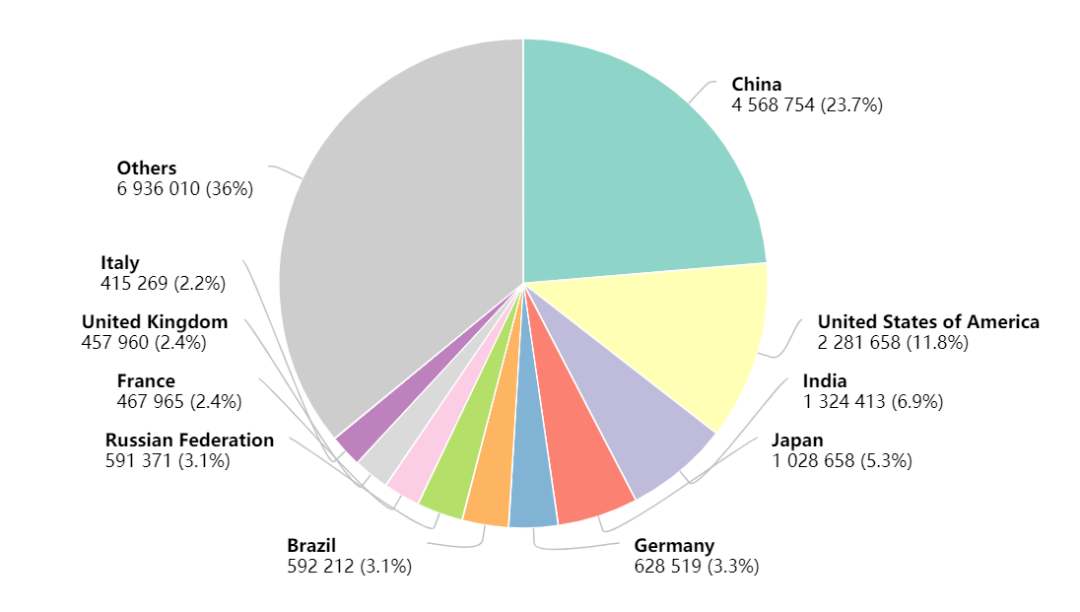
Number of cancer deaths in various countries in 2020
The dominant position of lung cancer is unshakable, and the death toll is far ahead
In 2020, there will be 4.57 million new cancer cases in China, with breast cancer ranking first in the world, but ranking fourth after lung cancer, colorectal cancer and gastric cancer in China.
In 2020, the top ten cancers with new cancer cases in China were: lung cancer 820000, colorectal cancer 560000, gastric cancer 480000, breast cancer 420000, liver cancer 410000, esophageal cancer 320000, thyroid cancer 220000, pancreatic cancer 120000, prostate cancer 120000, and cervical cancer 110000. These ten cancers accounted for 78% of the number of new cancers.
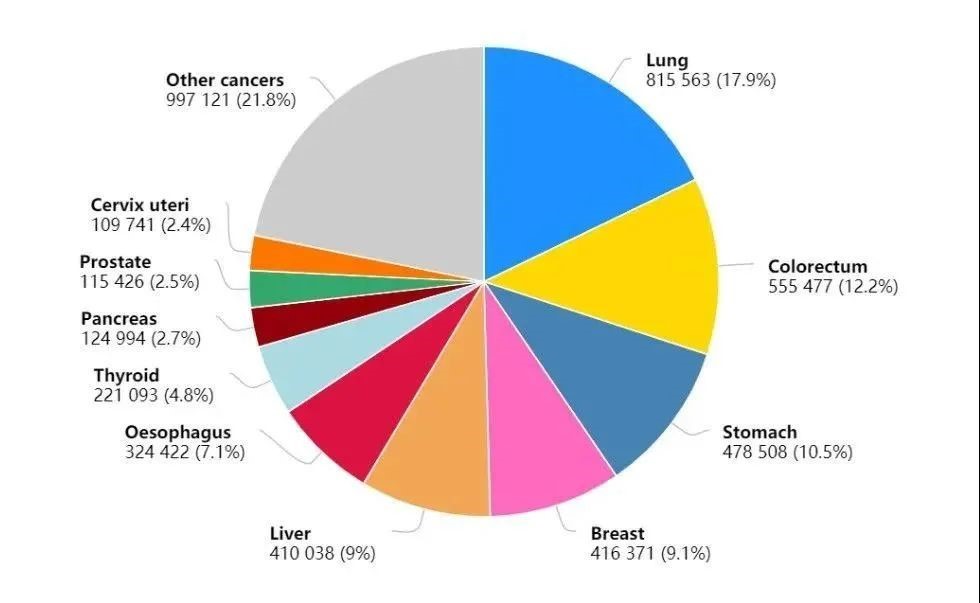
The top ten cancer types with the highest number of new cancer cases in China in 2020
In 2020, there were 3 million cancer deaths in China, with lung cancer leading the way with 710000 deaths, accounting for 23.8% of all cancer deaths.
In 2020, the top ten cancers that will cause cancer deaths in China are: 710000 for lung cancer, 390000 for liver cancer, 370000 for gastric cancer, 300000 for esophageal cancer, 290000 for colorectal cancer, 120000 for pancreatic cancer, 120000 for breast cancer, 70000 for nervous system cancer, 60000 for leukemia, and 60000 for cervical cancer. These ten cancers account for 83% of the total cancer deaths.
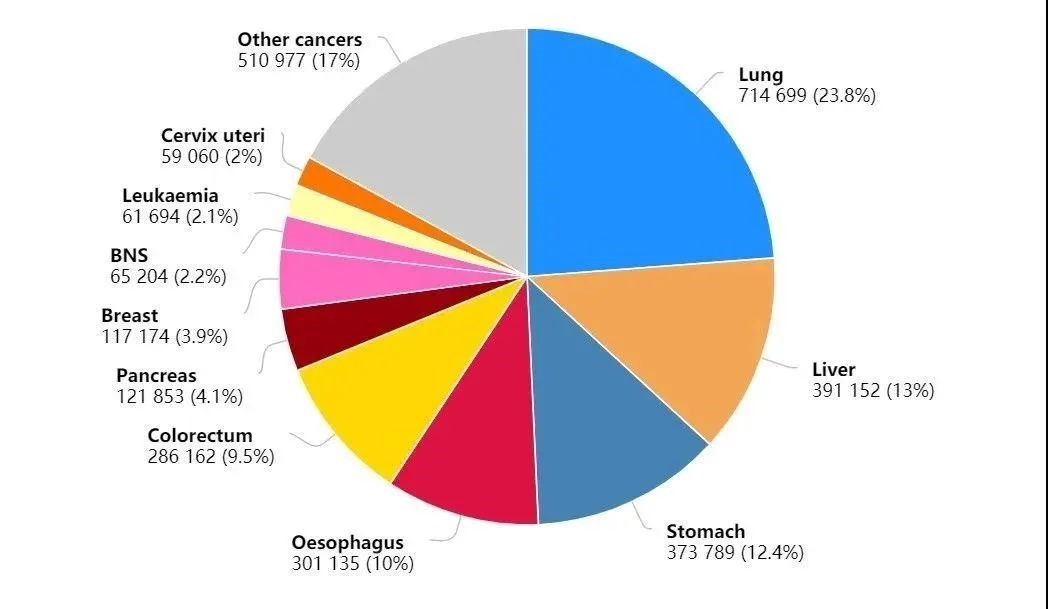
The top ten cancer types with the highest number of cancer deaths in China in 2020
Chinese men's data: lung cancer, stomach cancer, liver cancer are still in high demand
In 2020, there were 2.48 million new cases of cancer among Chinese men, accounting for 54% of the total. Among them, lung cancer, gastric cancer, colorectal cancer, and liver cancer had the highest incidence.
In 2020, the top ten cancers with new cases of male cancer in China were: lung cancer 540000, stomach cancer 330000, colorectal cancer 320000, liver cancer 300000, esophageal cancer 220000, prostate cancer 120000, pancreatic cancer 70000, bladder cancer 70000, thyroid cancer 50000, and non Hodgkin lymphoma 50000. These ten cancers accounted for 84% of the number of new male cancers.
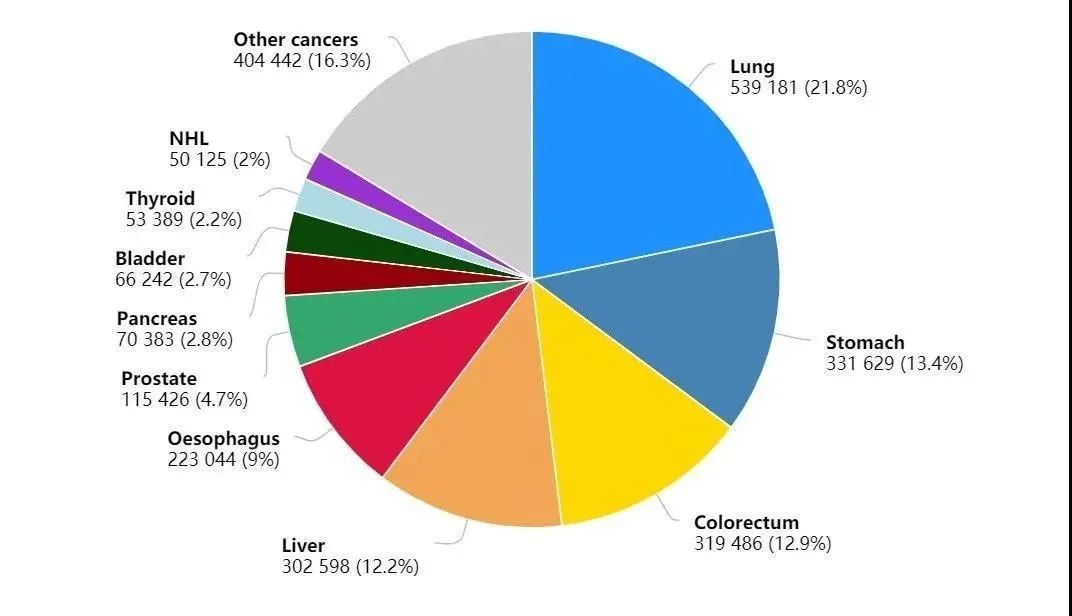
Top 10 cancer types with the highest number of new male cancer cases in China in 2020
In 2020, the number of male cancer deaths in China was 1.82 million, accounting for 61% of the total. Among them, lung cancer, liver cancer, stomach cancer, and esophageal cancer had the highest number of deaths.
In 2020, the top ten cancers in the number of male cancer deaths in China were: 470000 lung cancer, 290000 liver cancer, 260000 gastric cancer, 210000 esophageal cancer, 160000 colorectal cancer, 70000 pancreatic cancer, 50000 prostate cancer, 40000 leukemia, 30000 nervous system cancer, and 30000 non Hodgkin lymphoma. These ten cancers accounted for 88% of the total cancer deaths.
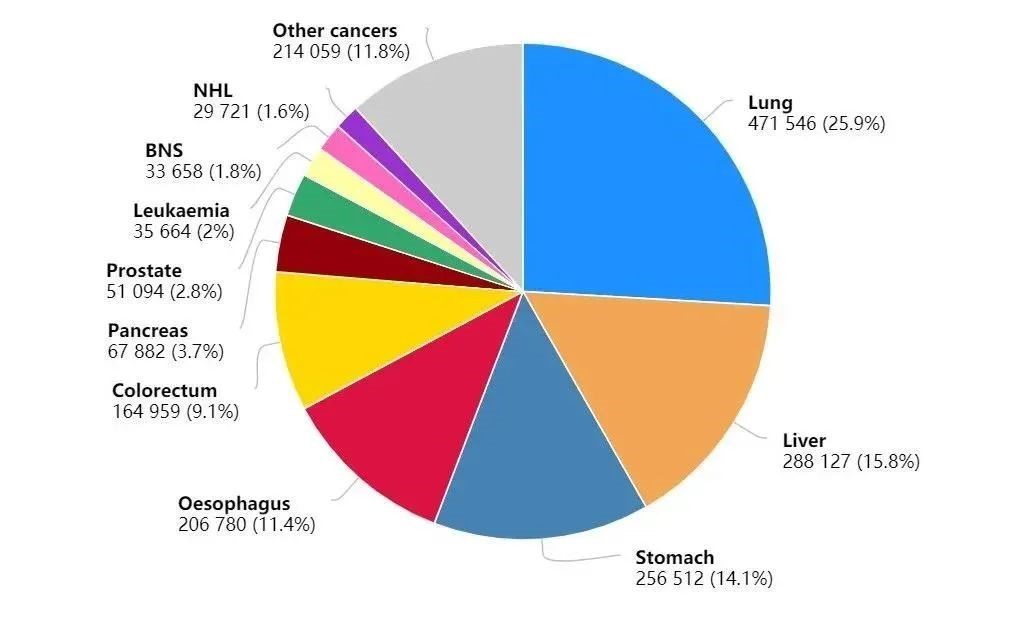
The top ten cancer types with the highest number of male cancer deaths in China in 2020
Chinese Women: New breast cancer Exceeds Lung Cancer, Topping the Top
In 2020, there will be 2.09 million new cases of cancer among Chinese women, accounting for 46% of the total, with breast cancer cancer, lung cancer and colorectal cancer taking the lead.
In 2020, the top ten cancers with new cases of female cancer in China were: 420000 breast cancer, 280000 lung cancer, 240000 colorectal cancer, 170000 thyroid cancer, 150000 gastric cancer, 110000 cervical cancer, 110000 liver cancer, 100000 esophageal cancer, 80000 endometrial cancer, 60000 ovarian cancer, which accounted for 81% of the number of new female cancers
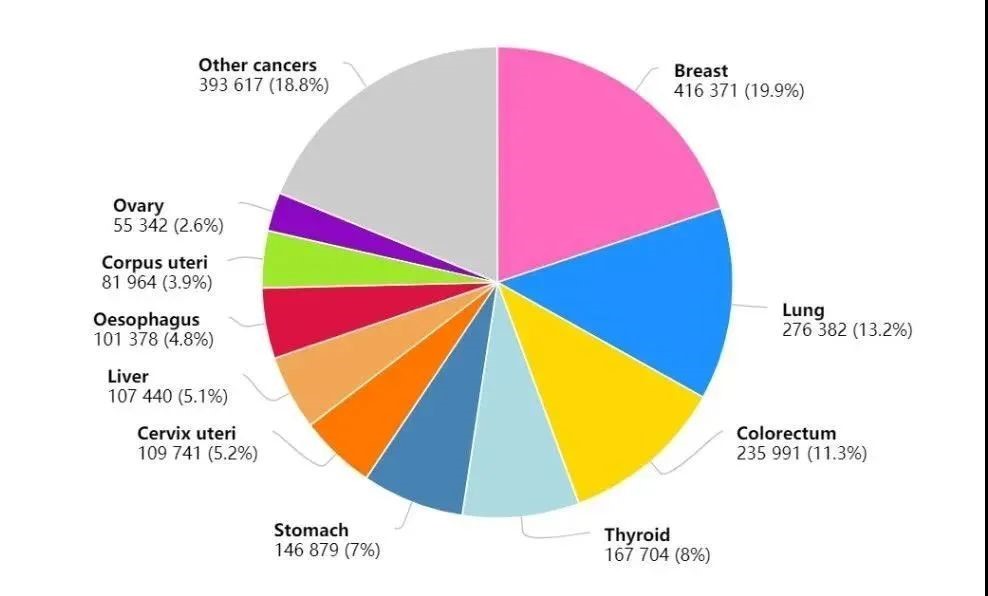
The top ten cancer types with the highest number of new cancer cases among Chinese women in 2020
In 2020, there will be 1.18 million female cancer deaths in China, accounting for 39% of the total, with lung cancer, colorectal cancer, stomach cancer and breast cancer leading the way.
In 2020, the top ten cancers in the number of female cancer deaths in China were: lung cancer 240000, colorectal cancer 120000, gastric cancer 120000, breast cancer 120000, liver cancer 100000, esophageal cancer 90000, cervical cancer 60000, pancreatic cancer 50000, ovarian cancer 40000, and nervous system cancer 30000. These ten cancers accounted for 83% of the total cancer deaths.
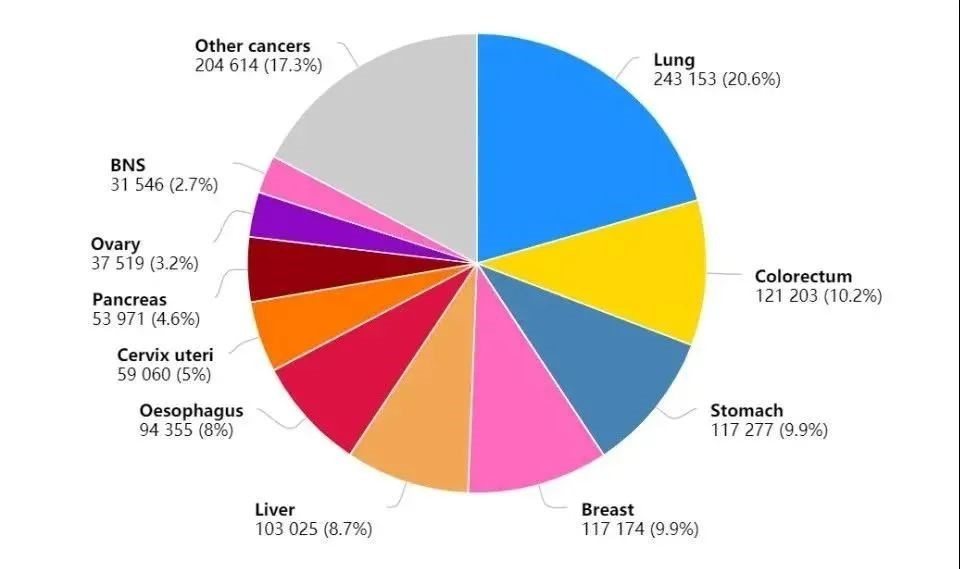
The top ten cancer types with the highest number of female cancer deaths in China in 2020
On a global scale, due to the intensification of population aging, it is expected that the cancer burden will increase by 50% compared to 2020 in 2040, and the number of newly diagnosed cancer cases will reach nearly 30 million. This is most significant in countries undergoing social and economic transformation.
For China, incorporating cancer prevention and treatment interventions into its health plan will help reduce the future burden of cancer, while promoting the development of innovative anti-cancer drugs. Only by combining prevention and treatment can we better reduce the burden of cancer and safeguard people's health.
keywords:
Related news


